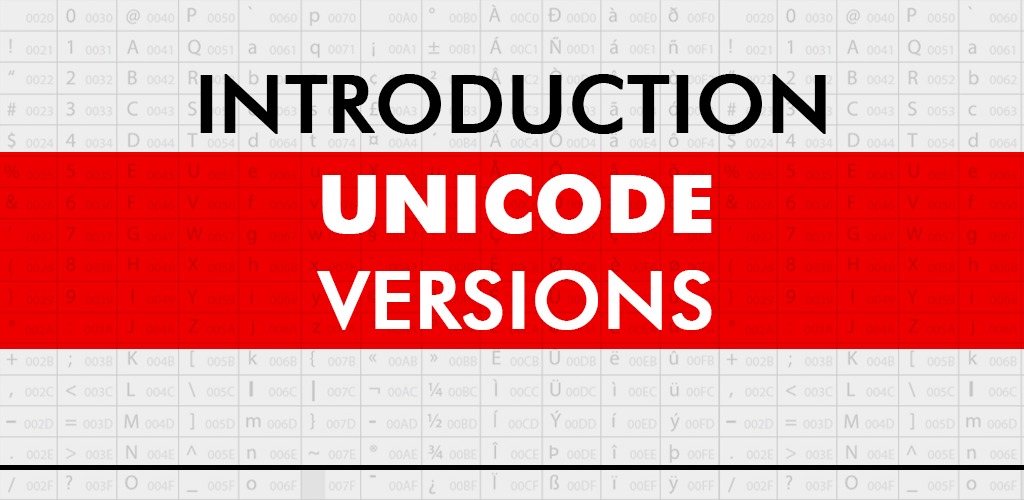What is Unicode?
Unicode is an encoding standard for the representation and handling of texts in different world’s writing systems. Unicode has a total of 143,859 characters and is managed by the Unicode consortium. It covers 154 historic and modern scripts and several sets of symbols and emoji. It is a universal format for character encoding.
The Unicode provides the compatibility to keep text in every writing system of the world. It is the only encoding standard that supports every language in the world. Unicode is required with web-based technologies like Java, XML, LDAP, and others. It is an encoding format that has huge global popularity. It consigns a code to every character and symbol in different writing systems and languages.
Unicode version
Unicode is developed with the co-existence of International Organizations of Standard. It consists of more information, rendering, in-depth encoding, and collation. The first Unicode standard: version 1.0, was published in 1991. New versions of Unicode were later published on a regular basis.

Unicode Version 14.0
Unicode Version 14.0 was published in April 2020. Its initial date was postponed due to COVID-19 Pandemic. It adds 37 new emoji characters and 5 new scripts.
Unicode Version 13.0
Unicode Version 13.0 is the latest version of the Unicode Standard. It was completely published on the consortium’s website.
Unicode Version 12
Unicode Version 12.1 was published in May 2019. It added 150 scripts with 137,929 total characters. Version 12.1 adds a single character at U+32FF for square ligature. And version 12.0 was published two months before version 12.1. It contains the same number of scripts but with one less character in total.
Unicode version 11
The Unicode version 11.0 contains 146 scripts and 137,374 characters. It also features 66 emoji characters and 5 unified ideographs.
Unicode version 10
Unicode version 10.0 was published in June 2017. This version of the Unicode standard adds 3 Zanabazar square characters, 56+ emoji, and 285 hentaigana characters. It has a number of 139 scripts and 136,390 characters in total.
Unicode Version 9
Unicode Version 9.0 was published a year before the release of version 10.0. This version added 74 symbols and emojis. It has 128,172 characters in total. It also features the Aldam, Newa, and Japanese TV symbols.
Unicode Version 8
The Unicode Version 8.0 was released in June 2015. It contains 120,672 characters with additional 7716 characters. It contains a set of five emoji skin tone modifiers and lowercase letters for Cherokee.
Unicode Version 7
Unicode Version 7.0 was released in June 2014. It has 123 scripts and encodes 112,956 characters. It has additional 2834 characters.
Unicode Version 6
Unicode Version 6.0 was published in October 2010 with 93 scripts and 109,384 encoding characters. This version added 2088 additional characters. Unicode 6.1 was released in January 2012 with 100 scripts. It contains 110,116 encoding characters adding 732 more characters.
Version 6.2 was released in September 2012. It contains 110,117 characters with one added character. Version 6.3 was released in September 2013. It added 110,122 characters with 5 additional characters.
Unicode version 5
The Unicode version 5.0 was released in July 2006. It contains 64 scripts and 99,024 characters with 1369 additional characters.
The Unicode version 5.1 was released in April 2008. 100,648 characters with 75 scripts. It added 1624 additional characters.
Version 5.2 was published in October 2009 with 90 scripts. It has 107,296 characters adding more than 6648 characters.
Unicode version 4
The Unicode version 4.0 was released in April 2003 with 52 scripts. It added 96,382 encoding characters, adding 1,226 more characters.
The Unicode 4.1 was released in March 2005. It contains 67.655 encoding characters, adding 1273 characters.
Unicode version 3
The Unicode version 3.0 was released in September 1999. It was a huge update with 38 scripts. It encoded 49,194 characters, adding 10,307 more characters.
Unicode version 3.1 was released in March 2001. This version encoded 94,140 characters, adding 44,946 more characters.
Unicode version 3.2 was released in March 2002. It encoded 95,156 characters with 1,016 additional characters.
Unicode version 2
The Unicode version 2.0 was published in July 1996. It encoded 38,885 characters, adding 11,373 more characters. Unicode 2.0 was the first version to reserve blocks outside of the multilingual plane.
The Unicode version 2.1 was released in May 1998 with 25 scripts. It encoded 38,887 characters, adding two more characters.
Unicode Version 1
Unicode Version 1.0 was the first Unicode version. It was released in October 1991. It contains 24 scripts and encoded 7129 characters.
Version 1.0.1 was released in June 1992. It has 25 scripts. This version has 28,327 encoding characters. 21204 characters were added and 6 were removed.
The Unicode version 1.1 was released in June 1993. It encoded 34,168 encoding characters. 5963 characters were added out of which 89 were removed and 33 were reclassified as control characters. More than 4306 Hungal syllables were added to the original set of characters.
